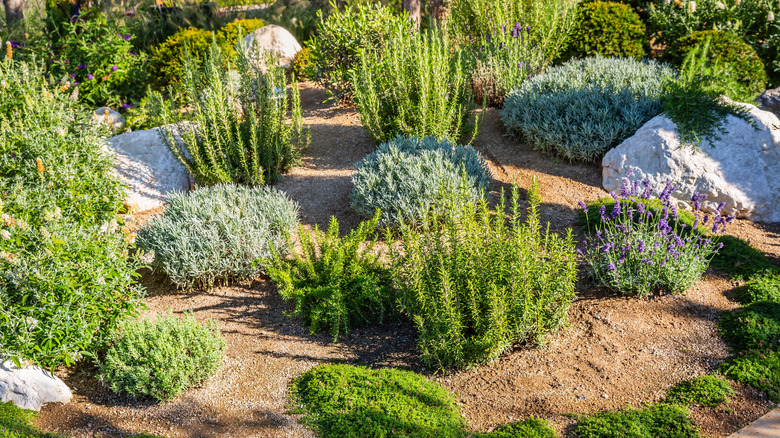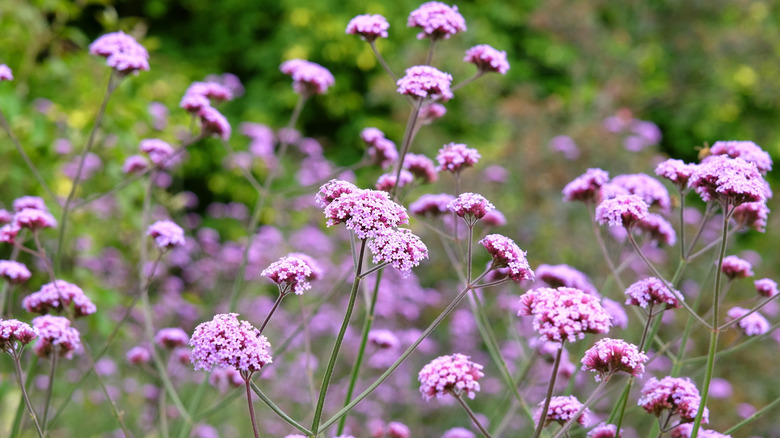The Drought-Tolerant And Low-Maintenance Perennial That Showcases Lovely Purple Blooms
If your dream garden involves vibrant colors without the constant upkeep, you may need to be introduced to Argentinian verbena (Verbena bonariensis). This tall, airy perennial delivers puffs of delicate purple flowers that sit on top of slender stems, attracting butterflies and bees from early summer until frost. It doesn't block the view of other plants, making it the perfect companion for both formal beds and more natural, wild-flower style planting. Best of all, it's drought-tolerant, resistant to most pests, and needs very little watering once it has been established.
Argentinian verbena, or Argentinian vervain is more than just a pretty accent—it's a garden workhouse that offers months of continuous blooms without demanding much from you. Native to South America, it's adapted to handle hot, dry conditions that might stress out other, fussier plants that aren't worth planting. Its drought tolerance makes it an ideal choice for eco-conscious gardens or homeowners living in regions where water conservation is key. Plus, because it self-seeds readily, you might find it popping up in unexpected corners of your garden, offering a whimsical, free-spirited effect.
Some sources classify Argentinian verbena as an invasive species, but it has been naturalized in several parts of the United States—specifically across the southeast and California. You should be careful when planting this species, as it can quickly grow out of control if left unchecked, especially in public areas. Gardeners often use it to weave color and height into elaborate gardenscapes, especially between other vibrant flowers. Even in smaller gardens, clumps of Verbena can create vertical interest without making the space feel overcrowded. The purple flowers make a perfect addition for homeowners who want to add a touch of beauty to their space without adding to their workload.
Growing and caring for Argentinian Verbena
There are plenty of things that you need to know about verbena before planting, but the process itself is fairly simple. You can sew the seeds indoors about 6 to 8 weeks before your last expected frost or plant them directly outdoors once the soil has warmed. The seeds require little to germinate, so gently press them into the soil surface about ⅛ of an inch below the surface. Keep the soil evenly moist until the seedlings emerge, then keep them to about 15 inches apart to give each plant room to develop.
If you prefer a faster start, purchase young plants from a nursery and transplant them into a sunny, well-draining spot. Verbena plants are incredibly effective at self-seeding, so you don't need to plant several in order to maintain a lush garden. You may only need to start with a few plants before they quickly spread across your garden with tall, purple sprouts. Either way, give your Verbena plants a head start in full sun to help them grow strong from the start.
Once the plants are established, they require little maintenance to keep their vibrant blooms—either as an annual or perennial depending on your region. They don't require much watering, unless you're currently experiencing a particularly dry spell. Deadheading isn't necessary for continuous flowers, although cutting back spent flowers can help tidy the appearance and may even encourage a fresh batch of flowers in late summer and fall. In warmer climates (USDA Zones 7 to 11), it often behaves as a short-lived perennial, returning for several seasons. However, in colder regions it should be treated like an annual.

